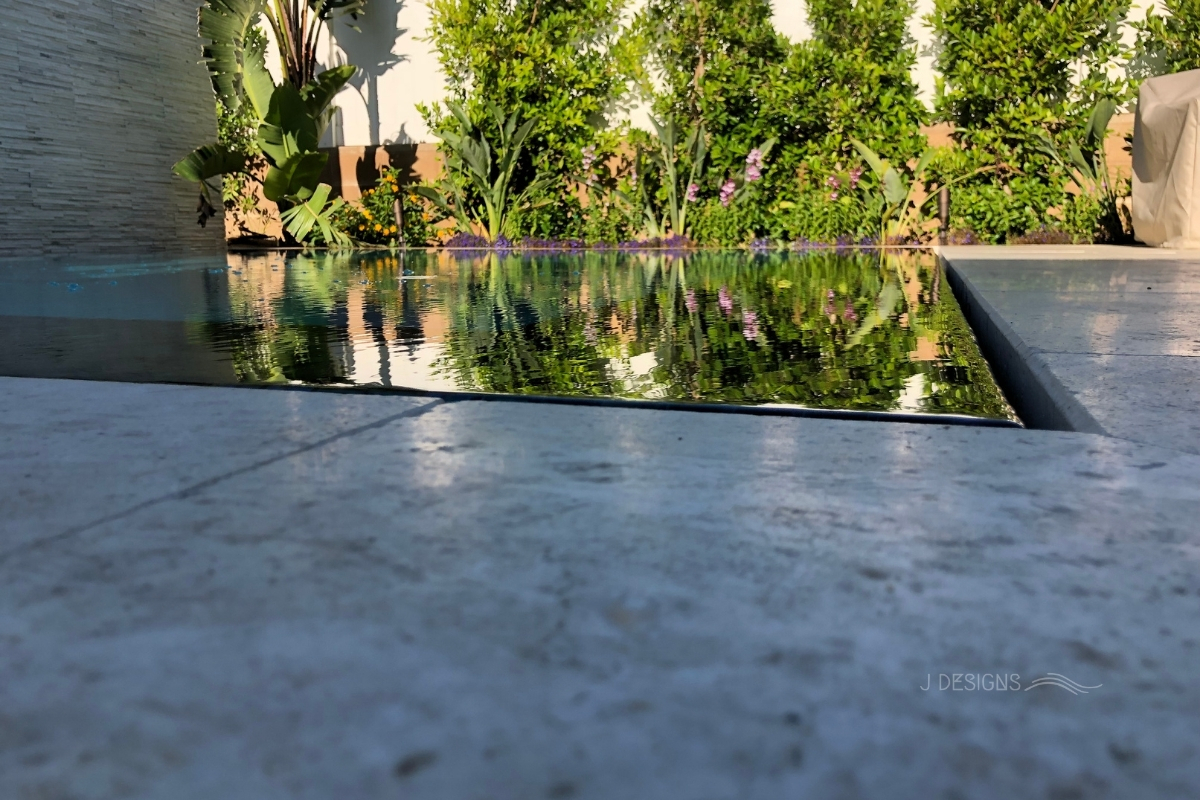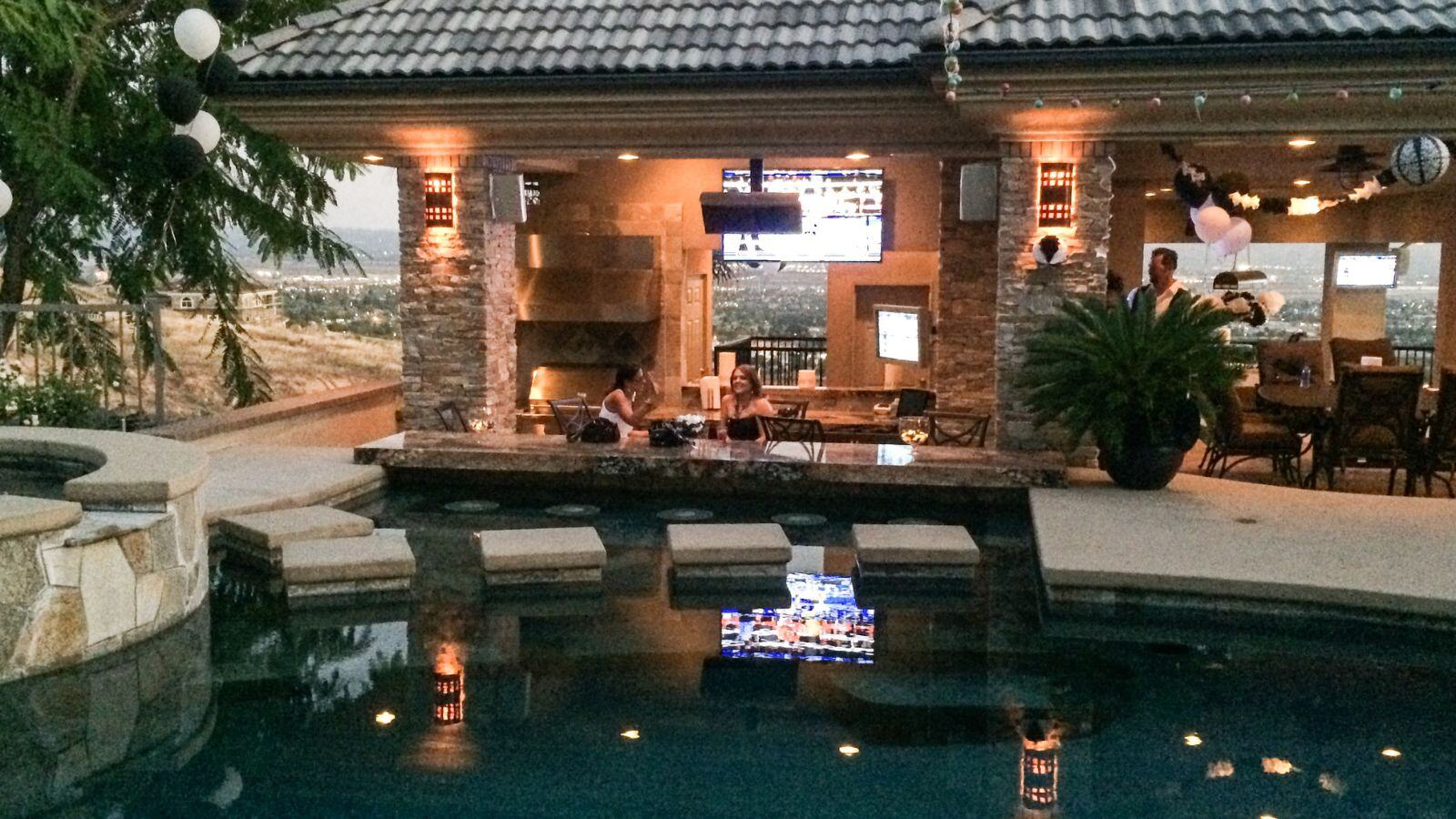Professional Pool Service: Why True Value Goes Beyond Price
When it comes to pool service, expertise is not optional; it’s required by law. In Los Angeles County, anyone performing maintenance, disinfection,...
5 min read
JC Escudero : Nov 1, 2025

Composite decking gained popularity in the '90s as a low-maintenance alternative to wood. Made from a mix of recycled plastic and wood fibers, it was marketed as durable, long-lasting, and easy to care for. And in a lot of ways, it is. However, in hotter climates, not all composites perform equally well, especially in terms of heat and UV resistance.
In this article, we’ll break down everything you need to know about building a deck in a hot, sunny climate, especially near a pool. We’ll compare natural wood, composite lumber, and a third material that’s gaining popularity in modern designs: GFRC concrete.
You’ll see how each one holds up to heat, water, and long-term wear and what they actually cost to install and maintain over time.
When you’re building a deck around a pool in a hot climate, you’re battling three major factors:
Sun (which causes fading, drying, and cracking)
Surface heat (which makes some materials too hot to walk on)
Water and humidity (which can cause warping, rot, or mold)
So what should you be looking for?
A material that looks great but overheats, fades, or becomes slippery when wet will turn into a costly mistake.
.png?width=752&height=630&name=Pool%20Project%20%20(1).png)
Natural wood is often chosen for its timeless, warm look, and with the correct type of wood and care, it can work beautifully in outdoor spaces. But how does it hold up in really hot, sunny, wet environments?
Cost Range: $65–$85 per square foot installed (premium hardwoods like Ipe are on the high end)
Maintenance Cost: Plan for annual sealing and periodic cleaning
Composite decking has gained popularity due to its resistance to rot, minimal maintenance requirements, and a diverse range of styles. But not all composites are created equal, and some aren’t built for intense heat.

Cost Range: $55–$65 per square foot installed
Maintenance Cost: Very low, usually just occasional rinsing
Pro tip: Choose lighter-colored composite boards with reflective caps if heat is a concern.
Here’s a side-by-side comparison to help you quickly evaluate what fits your needs:
|
Feature |
Composite Decking |
Natural Wood (e.g., Ipe) |
|
UV Resistance |
Excellent (capped boards) |
Moderate (needs sealing) |
|
Heat Retention |
Can get hot |
Usually cooler |
|
Water Resistance |
Excellent |
Good (Ipe/Teak) to Poor (Cedar) |
|
Maintenance |
Low |
High |
|
Lifespan |
25–50 years |
10–30 years (with upkeep) |
|
Cost (Installed) |
$55–$65 per sq. ft. |
$65–$85 per sq. ft. |
Composite is best for low maintenance and long-term durability.
Wood is best for a cooler, natural aesthetic, if you don’t mind the maintenance.
Glass Fiber-Reinforced Concrete is a high-performance concrete mix that utilizes fiberglass strands for enhanced strength. It’s not a decking material, but it shines in vertical or decorative applications. If your outdoor space includes more than just decking, consider adding built-in benches, vertical walls, or fire features; there's a third material to consider: GFRC concrete.
Cost: Custom pricing based on design and application
Maintenance: Very low, often just cleaning
Pro Tip: GFRC is ideal for design-forward pool areas where both function and style are equally important.

When it comes to building a poolside deck that lasts in a hot, wet climate, the material you choose definitely matters, but what matters as much (and often more) is how it’s installed.
At J Designs, we’ve seen countless projects where homeowners chose a great material only to see it fail early due to poor preparation, inadequate drainage, or weak support framing.
The truth is, your deck’s performance and lifespan will be determined by the foundation it's built on.
Whether you're using composite, hardwood, or even GFRC for vertical features, here’s what often gets overlooked:
In many cases, the support system, framing, and site prep will cost more than the actual decking boards.
That’s not a bad thing; it’s what protects your investment and ensures your deck performs for years to come.
When comparing decking options, don’t just consider the price of the boards. Ask your contractor how they’ll handle the entire system, from ground preparation to flashing to finishing touches.
Cost depends on material, design complexity, and region, but here’s a breakdown of average installed prices and long-term upkeep:
|
Material |
Price per sq. ft. (Installed) |
Maintenance Level |
Notes |
|
Ipe Wood |
$45–$60 |
High |
Natural look, very durable |
|
Composite |
$45–$70 |
Low |
Easy care, may retain heat |
|
PVC Decking |
$40–$70 |
Very Low |
Lightweight, hot to touch |
|
GFRC (vertical) |
Custom |
Very Low |
Not used for walking surfaces |
Pro Tip: Factor in maintenance over a 10–15 year period. Composite may cost more up front, but often wins in total cost of ownership.
You’ve seen the options. You understand the trade-offs. Now it’s time to decide what matters most to you. If you’re looking for the lowest maintenance with excellent moisture protection, opt for a high-quality composite; choose a brand that performs well in high temperatures. If you want a cooler surface and don’t mind a little upkeep, natural hardwoods like Ipe are an excellent long-term investment. And if you’re building a fully designed outdoor space, don’t overlook GFRC concrete for vertical features that will outlast nearly everything else in your yard. Since 2008, J Designs has provided deck solutions and installed long-lasting decks made of both wood and composite materials. Learn more in our next article: Is a Pedestal system an option for your pool deck?
.jpg)
When it comes to pool service, expertise is not optional; it’s required by law. In Los Angeles County, anyone performing maintenance, disinfection,...

Have you ever seen a pool that looks like a mirror? Water blends seamlessly into the edge, perfectly level with the deck, flowing evenly in every...

Pool season is here, and it’s not just about crystal-clear water anymore. Today’s most memorable backyards are multisensory experiences, and...